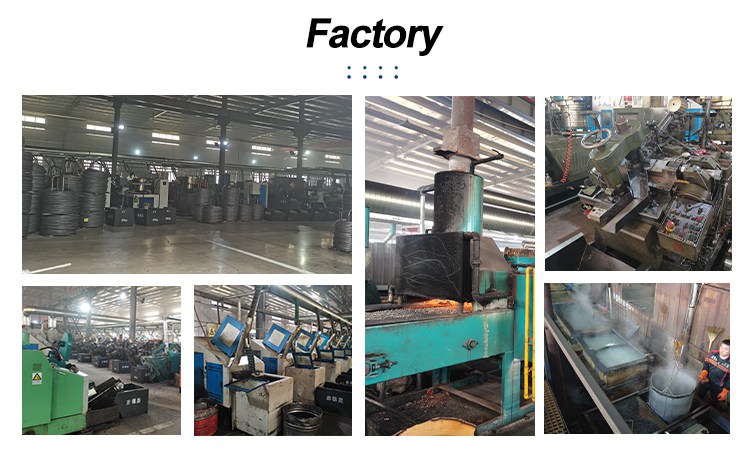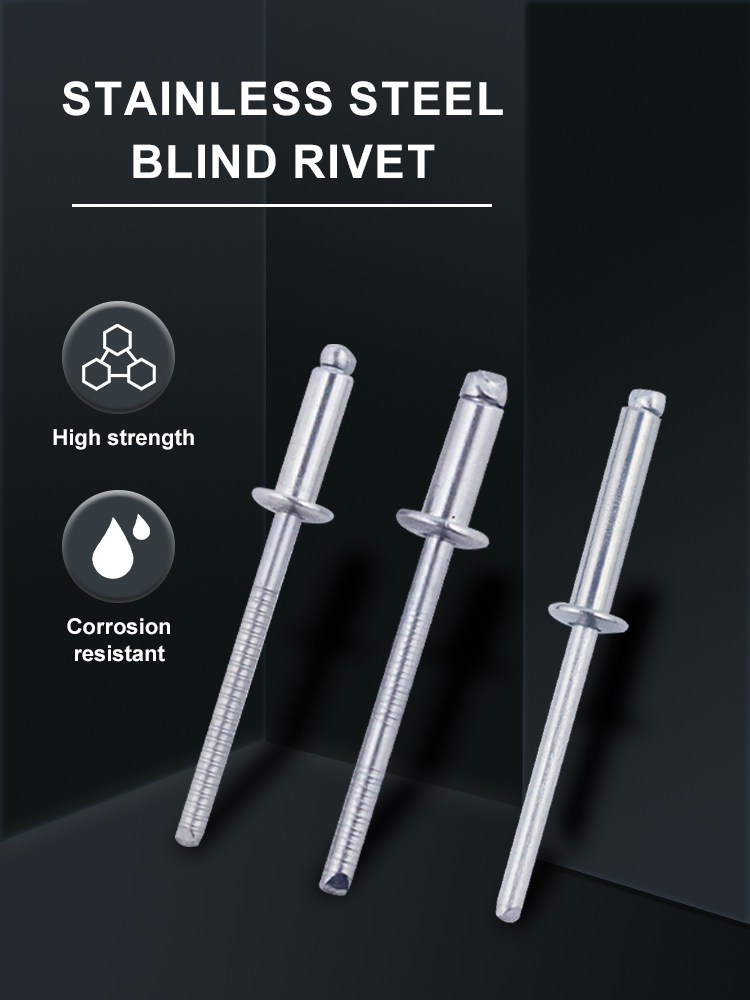
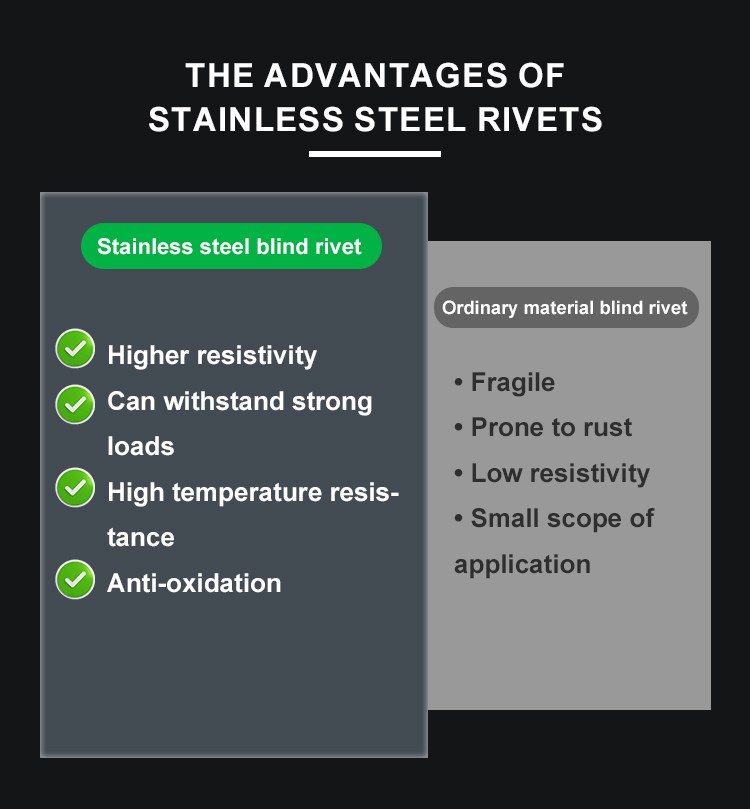 Stainless steel blind rivets are a commonly used type of fastener, typically employed to connect two or more materials, ensuring they are tightly fixed together. Stainless steel blind rivets are composed of rivet rods, rivet caps and rivet shells. Among them, the rivet rods are made of metal materials and are fixed by forming grooves or pull cones on one side. The rivet cap is located on the other side of the rivet bar, and its function is to provide support and fixation when the rivet is pulled. The rivet housing is a part that connects the rivet rod and the rivet cap, serving to fix and reinforce them.
Stainless steel blind rivets are a commonly used type of fastener, typically employed to connect two or more materials, ensuring they are tightly fixed together. Stainless steel blind rivets are composed of rivet rods, rivet caps and rivet shells. Among them, the rivet rods are made of metal materials and are fixed by forming grooves or pull cones on one side. The rivet cap is located on the other side of the rivet bar, and its function is to provide support and fixation when the rivet is pulled. The rivet housing is a part that connects the rivet rod and the rivet cap, serving to fix and reinforce them.
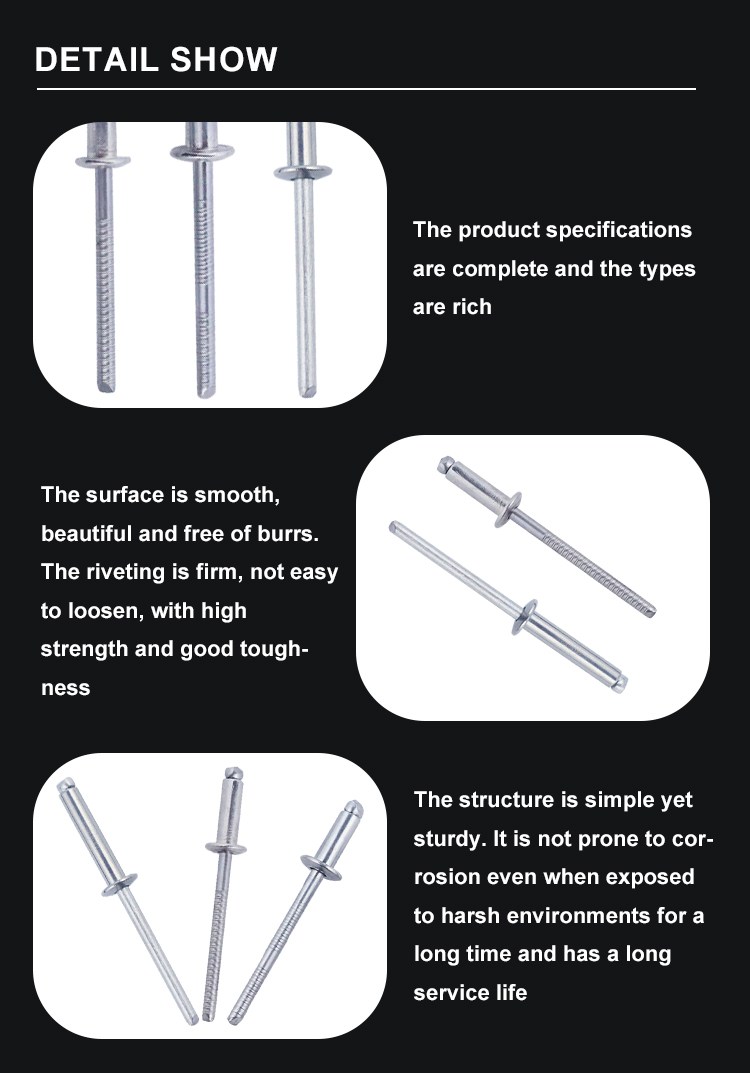 Advantages of stainless steel blind rivet:
Advantages of stainless steel blind rivet:
I. Physical Properties of stainless steel blind rivet
Stainless steel blind rivet have a relatively high resistivity, which makes them perform well in terms of electricity. Compared with carbon steel wire, the resistivity of stainless steel blind rivet is as high as five times. In addition, as the temperature rises, the expansion coefficient of stainless steel blind rivet will also increase.
Ii. The load-bearing capacity of stainless steel blind rivet
Stainless steel blind rivet can withstand strong loads. Although their load-bearing capacity may not be as good as that of high-strength bolts, it is sufficient to meet the common usage requirements. Its excellent load-bearing capacity is attributed to the strength advantage of stainless steel itself.
Iii. High-temperature resistance of stainless steel blind rivet
Stainless steel blind rivet have excellent anti-oxidation ability and can work normally in high-temperature environments without being affected by high temperatures.
Iv. Mechanical Properties of stainless steel blind rivet
The mechanical properties of stainless steel blind rivets are closely related to the stainless steel wire or plates they use. The superior properties of stainless steel endow the blind rivets with outstanding corrosion resistance, tensile strength and shear resistance.
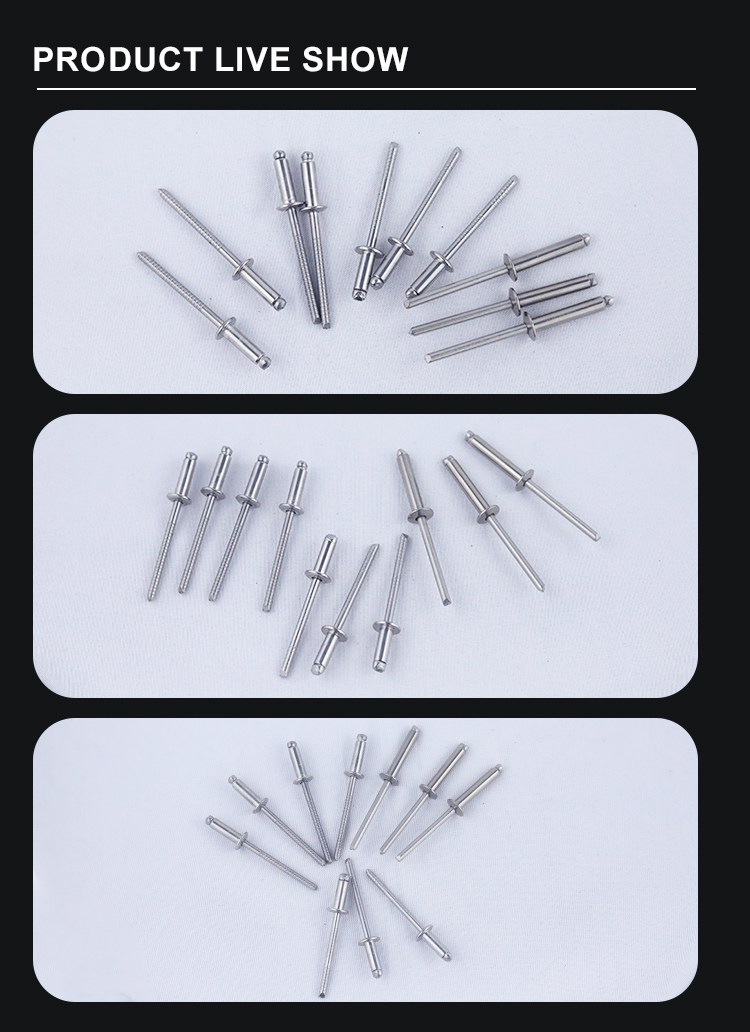
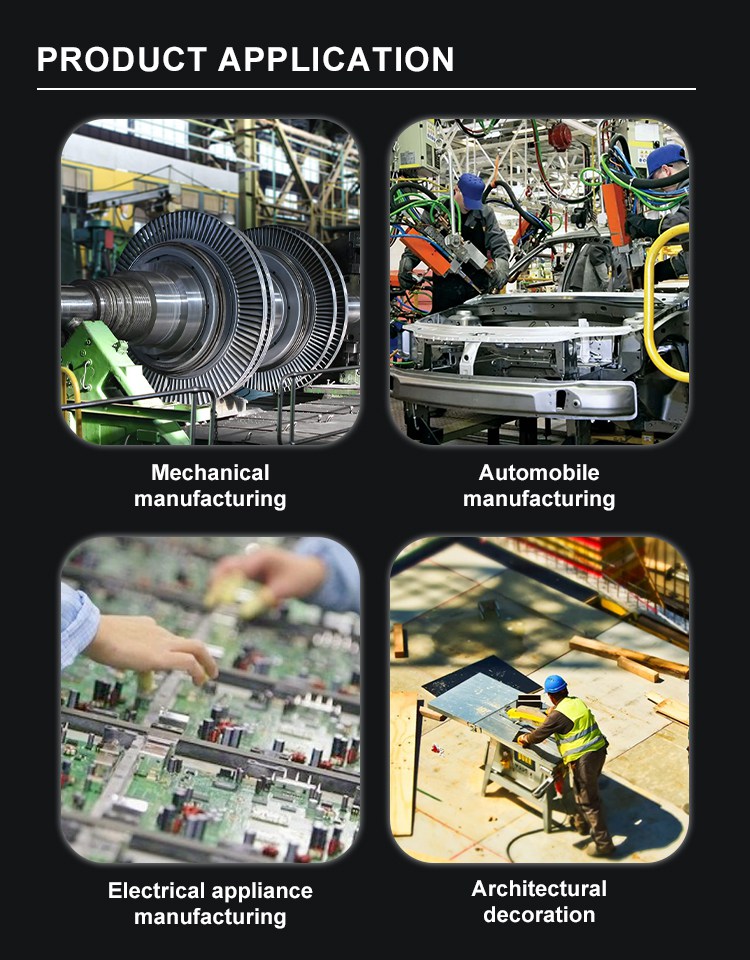 Stainless steel blind rivets have wide applications in various fields, mainly including the following aspects:
Stainless steel blind rivets have wide applications in various fields, mainly including the following aspects:
1. In the manufacturing of mechanical equipment, stainless steel blind rivets are used to connect various metal components such as chassis, cabinets, and mechanical enclosures, ensuring the structural stability and reliability of the equipment.
2. In the automotive manufacturing industry, stainless steel blind rivets are employed to connect components like the vehicle body, chassis, and engine, capable of withstanding the vibrations and impacts during driving.
3. In electronic devices and electrical appliances, they are utilized for connecting the outer casings and securing internal components, ensuring the product's sealing and electrical performance.
4. In architectural decoration, stainless steel blind rivets can be used to connect metal sheets, aluminum alloy doors and windows, etc., providing a visually appealing and robust connection.
